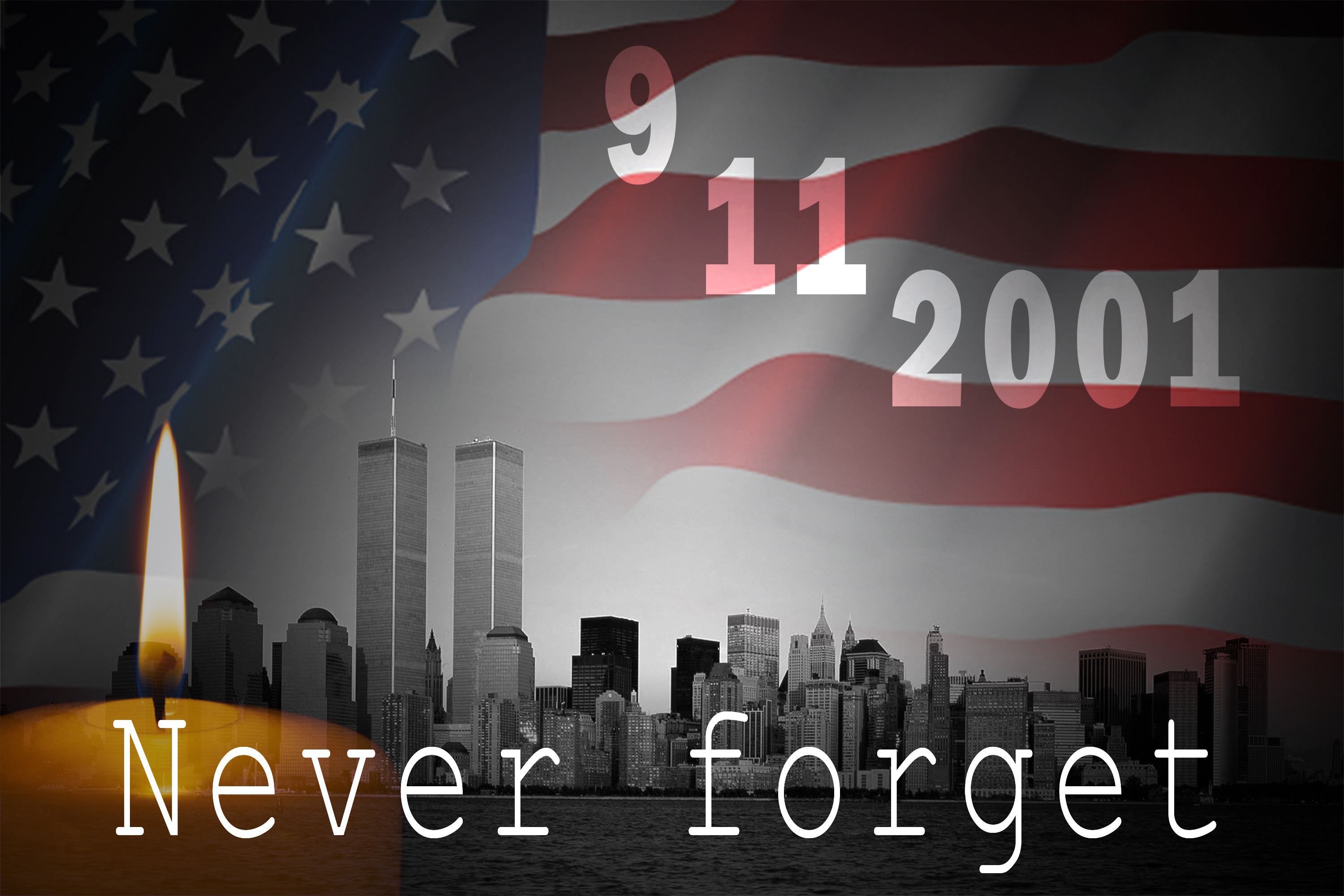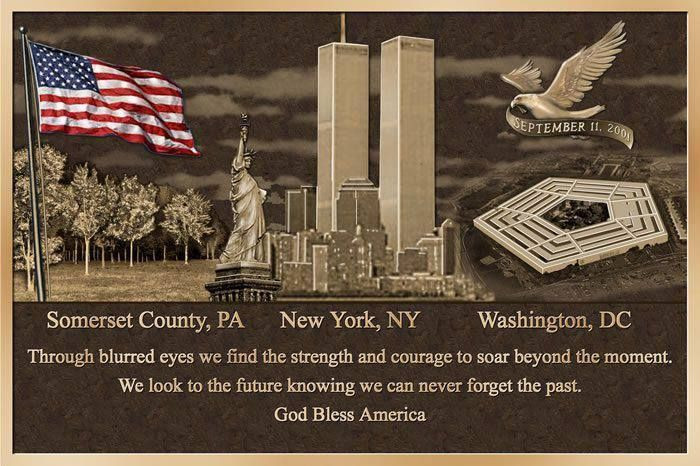On Sept. 11, 2001, terrorists linked to the Islamic extremist group al Qaeda—founded by Osama bin Laden—hijacked four commercial passenger airplanes and carried out suicide attacks against targets in the United States. Two of the planes were flown into the World Trade Center in New York City. Within a few hours, both of the twin towers collapsed into rubble, demolishing a large section of lower Manhattan. A third plane hit the Pentagon in Arlington, Virginia, just outside Washington, D.C. The passengers and crew of the fourth plane fought back, and the plane was downed in a field near Shanksville, Pennsylvania.
Almost 3,000 people were killed in the 9/11 terrorist attacks, including the 19 al Qaeda terrorists. The shocking events of Sept. 11 were televised globally and left much of the world reeling in horror. The administration of President George W. Bush responded by declaring a “war on terrorism”, including the creation of the Department of Homeland Security and the invasion of Afghanistan.
The World Trade Center Attack
On Sept. 11, 2001, at 8:45 a.m. on a clear Tuesday morning, an American Airlines Boeing 767 loaded with 20,000 gallons of jet fuel crashed into the north tower of the World Trade Center in New York City. The impact left a gaping, burning hole near the 93rd and 99th floors of the 110-story skyscraper, instantly killing hundreds of people and trapping hundreds more on higher floors. As the evacuation of the tower and its twin got underway, television cameras broadcasted live images of what initially appeared to be a freak accident. Then, 18 minutes after the first plane hit, a second Boeing 767—United Airlines Flight 175—appeared in the sky, sharply turned toward the World Trade Center, and sliced into the south tower between the 77th and 85th floors. The collision caused a massive explosion that showered burning debris over surrounding buildings and onto the streets below. It immediately became clear that America was under attack.
The Pentagon Attack
As millions watched the events unfolding in New York, American Airlines Flight 77 circled over downtown Washington, D.C., before crashing into the west side of the Pentagon military headquarters at 9:45 a.m. Jet fuel from the Boeing 757 caused a devastating inferno that led to the structural collapse of a portion of the giant concrete building, which is the headquarters of the U.S. Department of Defense. All told, 125 military personnel and civilians were killed in the Pentagon, along with all 64 people aboard the airliner.
The Collapse of the Twin Towers
Less than 15 minutes after the terrorists struck the nerve center of the U.S. military, the horror in New York took a catastrophic turn when the south tower of the World Trade Center collapsed in a massive cloud of dust and smoke. The structural steel of the skyscraper, built to withstand winds in excess of 200 miles per hour and a large conventional fire, could not withstand the tremendous heat generated by the burning jet fuel. At 10:30 a.m., the north building of the twin towers collapsed. Only 18 people in the World Trade Center towers at the time of the collapse survived. Most were with a group of FDNY firefighters in the North Tower’s Stairwell B, which remained intact. One woman survived after the stairs she was rushing down disintegrated around her. Almost 10,000 others were treated for injuries, many severe.
Flight 93
Meanwhile, a fourth California-bound plane—United Flight 93—was hijacked about 40 minutes after leaving Newark Liberty International Airport in New Jersey. Because the plane had been delayed in taking off, passengers on board learned of events in New York and Washington via cell phone and Airfone calls to the ground. Knowing that the aircraft was not returning to an airport as the hijackers claimed, a group of passengers and flight attendants planned an insurrection. One of the passengers, Thomas Burnett, Jr., told his wife over the phone that “I know we’re all going to die. There’s three of us who are going to do something about it. I love you, honey.” Another passenger—Todd Beamer—was heard saying “Are you guys ready? Let’s roll” over an open line. Sandy Bradshaw, a flight attendant, called her husband and explained that she had slipped into a galley and was filling pitchers with boiling water. Her last words to him were “Everyone’s running to first class. I’ve got to go. Bye.” The passengers fought the four hijackers and are suspected to have attacked the cockpit with a fire extinguisher. The plane then flipped over and sped toward the ground at upwards of 500 miles per hour, crashing in a rural field near Shanksville in western Pennsylvania at 10:10 a.m. All 44 people aboard were killed. Its intended target is not known, but theories include the White House, the U.S. Capitol, the Camp David presidential retreat in Maryland or one of several nuclear power plants along the eastern seaboard.
The Aftermath: A Nation in Mourning
A total of 2,996 people were killed in the 9/11 attacks, including the 19 terrorist hijackers aboard the four airplanes. Citizens of 78 countries died in New York, Washington, D.C., and Pennsylvania. At the World Trade Center, 2,763 died after the two planes slammed into the twin towers. That figure includes 343 firefighters and paramedics, 23 New York City police officers and 37 Port Authority police officers who were struggling to complete an evacuation of the buildings and save the office workers trapped on higher floors. At the Pentagon, 189 people were killed, including 64 on American Airlines Flight 77, the airliner that struck the building. On Flight 93, 44 people died when the plane crash-landed in Pennsylvania.
America’s Response: The “War on Terror”
At 7 p.m., President George W. Bush, who was in Florida at the time of the attacks and had spent the day being shuttled around the country because of security concerns, returned to the White House. At 9 p.m., he delivered a televised address from the Oval Office, declaring, “Terrorist attacks can shake the foundations of our biggest buildings, but they cannot touch the foundation of America. These acts shatter steel, but they cannot dent the steel of American resolve.” In a reference to the eventual U.S. military response he declared, “We will make no distinction between the terrorists who committed these acts and those who harbor them.”
Operation Enduring Freedom, the American-led international effort to oust the Taliban regime in Afghanistan and destroy Osama bin Laden’s terrorist network based there, began on October 7. Within two months, U.S. forces had effectively removed the Taliban from operational power, but the war continued, as U.S. and coalition forces attempted to defeat a Taliban insurgency campaign based in neighboring Pakistan. Osama bin Laden, the mastermind behind the September 11th attacks, remained at large until May 2, 2011, when he was finally tracked down and killed by U.S. forces at a hideout in Abbottabad, Pakistan. In June 2011, then-President Barack Obama announced the beginning of large-scale troop withdrawals from Afghanistan; it took until August 2021 for all U.S. forces to withdraw.
The Lasting Impact: The 9/11 Commission and Beyond
In the wake of security fears raised by 9/11 and the mailing of letters containing anthrax that killed two and infected 17, The Homeland Security Act of 2002 created the Department of Homeland Security. It was signed into law by President George W. Bush on Nov. 25, 2002. Today, the Department of Homeland Security is a cabinet responsible for preventing terror attacks, border security, immigrations and customs and disaster relief and prevention.
The act was followed two days later by the formation of the National Commission on Terrorist Attacks Upon the United States. The bipartisan “9/11 Commission”, as it came to be known, was charged with investigating the events that lead up to September 11th. The 9/11 Commission Report was released on July 22, 2004. It named Khalid Sheikh Mohammed, the accused mastermind behind 9/11, “the principal architect of the 9/11 attacks.”
Mohammed led propaganda operations for al Qaeda from 1999-2001. He was captured on March 1, 2003 by the Central Intelligence Agency and Pakistan’s Inter-Services Intelligence and interrogated before being imprisoned in Guantanamo Bay detention camp with four other accused terrorists charged with 9/11-related war crimes. The use of torture, including waterboarding, during Khalid Sheikh Mohammed’s interrogation has received international attention. In August 2019, a U.S. military court judge in Guantánamo Bay, Cuba set a trial date for Mohammed and the other four men charged with plotting the 9/11 terrorist attacks to begin in 2021; it was later postponed because of the COVID-19 pandemic.
Remembering the Victims and Honoring the Heroes
On Dec. 18, 2001, Congress approved naming September 11 “Patriot Day” to commemorate the anniversary of the 9/11 attacks. In 2009, Congress named Sept. 11 a National Day of Service and Remembrance. The first memorials to Sept. 11 came in the immediate wake of the attacks, with candlelight vigils and flower tributes at U.S. embassies around the world. In Great Britain, Queen Elizabeth sang the American national anthem during the changing of the guard at Buckingham Palace. Rio de Janeiro put up billboards showing the city’s Christ the Redeemer statue embracing the New York City skyline.
A World Trade Center Site Memorial Competition was held to select an appropriate permanent memorial to the victims of 9/11. The winning design by Michael Arad, “Reflecting Absence”, now sits outside the museum in an eight-acre park. It consists of two reflecting pools with waterfalls rushing down where the Twin Towers once rose into the sky.
The names of all 2,983 victims are engraved on the 152 bronze panels surrounding the pools, arranged by where individuals were on the day of the attacks, so coworkers and people on the same flight are memorialized together. The site opened to the public on Sept. 11, 2011, to commemorate the 10-year anniversary of 9/11. The National September 11 Memorial & Museum followed, opening on the original World Trade Center site in May 2014. The Freedom Tower, also on the original World Trade Center site, opened in November 2014.
23 Years Later: A Day to Reflect
Twenty-three years have passed since the 9/11 attacks, but the events of that day remain etched in our collective memory. As we remember the victims, honor the heroes, and reflect on the lasting impact of 9/11, let us also reaffirm our commitment to unity, resilience, and the enduring spirit of America. Let us never forget the lessons learned that day, and let us strive to build a world where such tragedies never happen again.


















